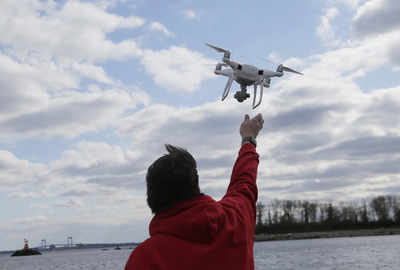The Federal Aviation Administration (FAA) on Thursday imposed a temporary drone flight ban in parts of New York state, including Brooklyn, Queens and two communities on Long Island. The restrictions, expected to last until January 18, are part of a broader effort to secure critical infrastructure sites such as energy facilities and government buildings as drone sightings continue to stoke fear and uncertainty in the region.
“Preventive action” or real threat?
New York Governor Kathy Hochul assured the public that the ban was preventive in nature, stressing that “there is no threat to these sites.” However, with restrictions affecting key areas such as Far Rockaway in Queens and Ridge and Garden City on Long Island, many are wondering whether authorities know more than they are letting on.
The FAA’s move comes after New Jersey enacted a similar ban earlier this week that covered much of the state, including Camden, Elizabeth and Jersey City. The restrictions, which will last until January 17, are in response to growing concerns about drone activity near sensitive infrastructure, such as the Salem Nuclear Generating Station in Lower Allowes Creek.
“This is an extremely important site,” Rep. Jeff Van Drew said of the nuclear power plant
Rep. Jeff Van Drew, whose district includes Salem County, expressed his concerns about recent reports of drones near nuclear facilities. “This is an extremely important location tactically,” Van Drew explained, emphasizing the importance of the facility, which generates nearly half of New Jersey’s electricity. Salem Nuclear Power Plant operator PSE&G confirmed that it has asked the FAA to impose flight restrictions near the facility for safety reasons.
Although there is no direct evidence of a threat, the urgency of the drone sightings has escalated. Van Drew criticized the federal government for not providing more specific details about the incidents, noting that “it’s the uncertainty that scares people.”
Wider concerns spread across region
As drone sightings become more frequent, public concerns have intensified. In Connecticut, Republican lawmakers are now calling for similar drone restrictions to protect the state’s critical infrastructure, but there’s an unanswered collective question: “What about Connecticut?”
In New Jersey, Rep. Josh Gottheimer expressed frustration at the lack of transparency. “They must inform the public about the reasons for their actions,” he said. He worries that without a clear explanation, the FAA’s broad ban could cause more confusion and panic among residents and businesses in affected areas.
Pilot’s Confusion and Difficulties
Patrick E. Bradley, an aviation attorney and pilot in Princeton, New Jersey, commented on the unusual nature of the FAA’s decision, noting that in his more than 40 years of flying, he had never Never seen such broad restrictions. “All these tiny, tiny, temporary flight restrictions — I’ve never seen this done before,” Bradley said, adding that the complexity of these bans could create problems for drone operators and those trying to Pilots navigating the airspace were confused.
The FAA’s restrictions only apply to drone operators, but violators will face severe consequences. Pilots caught flying drones in restricted areas could face federal detention or questioning. Many commercial drones are registered with the FAA, making it easier for authorities to track down violators. However, concerns remain about how amateur or recreational drone users might be detected.
Safety concern or overreaction?
Uncertainty surrounding drone sightings continues to fuel speculation despite repeated assurances from federal officials that there is no immediate security threat. “We continue to assess that reported drone sightings do not pose a threat to public safety,” Department of Homeland Security spokesperson Dana Gallagher said, while insisting the FAA acted out of an abundance of caution.
As drone sightings continue to surge, with numerous reports in New Jersey, New York and other Northeastern states, the question remains: Are these drones just harmless misidentification of helicopters or planes, or are they something more sinister? Something is working? Only time will tell whether the FAA’s swift action is a cautious response to a potential threat or an overreaction to growing anxiety.
For now, New Yorkers and New Jerseyans, as well as the region’s drone operators, will have to adapt to the new temporary restrictions — waiting to see if this is a temporary precaution or the start of a broader regulatory crackdown.








